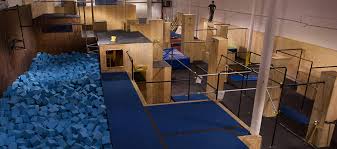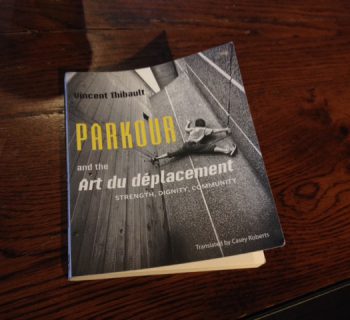Passionate traceurs view parkour with the same disciplined respect as a martial artist would. While the sport is still in its infancy, there is still a history and a very precise method. And much like martial arts, many newcomers to the sport look to skip traditions and history lessons, and assume they can jump right into the flashy, Hollywood stuff. And while true veterans of the sport may be criticized for being exclusionary, unwilling to welcome rookies with open arms, the majority of them simply wish to maintain a standard of method and a respect for the art of parkour.
Opinions toward training and practice methods are polarized, resulting in the debate of what authentic parkour training methods. Indoor training facilities are popping up all over the world with varied success. Gyms like Apex and Rochester Parkour are thriving with multiple locations, while other gyms aren't experiencing the same success. Unfortunately BKLN Beast, which opened in January of 2013 with much excitement and anticipation, closed in November of that same year. Successful or not, these gyms are under fire from the old school traceurs as they are viewed as somewhat of a cop out, deeming indoor facilities as a provider of unnatural and over simplified training methods. True parkour is believed to be "you against the elements", as traceurs seamlessly weave through cityscapes battling the elements of both nature and man-made construction. Indoor gyms are seen by some as falling short of providing authentic parkour training experience.
The argument in favor of indoor parkour training facilities makes just as much sense, once personal emotion and resentment are stripped from the opinion. The first, and most obvious point in favor of these facilities is paramount: safety. As the typical age of a rookie traceur tends to skew toward younger adolescents, safety is often a concern. Indoor training facilities boast safe conditions in which rookies and veterans alike can hone their skills in a predictable and controlled environment. The second point in favor of indoor facilities is about weather. In cities like New York that experience the best and worst of what Mother Nature has to offer, extreme conditions like sleet and subzero degree weather can hinder one's training if they work exclusively outside. Indoor facilities offer a year-round headquarters for traceurs to learn, develop, and improve. The final and most compelling argument in favor of indoor training stems from the notion of community development. Most, if not all proprietors of these specialty gyms talk about creating a centralized hub for the parkour communities, giving rookies the chance to rub elbows with local legends, building a sense of camaraderie – something that many traceurs feel is lacking in the sport.
This boils down to a question of understanding, appreciation, and respect. Issues with training indoors are not meant to slight those who are passionate about developing their skills in a controlled environment, as long as they are aware of the fact that true parkour exists only in cityscapes and natural elements. That being said, as long as participants realize that they cannot be commended for knowing any particular trick until they can execute it outside of the confines of a gym. Rookie traceurs must appreciate the fact that parkour is meant to be a freestyle reaction to encountered obstacles, and not merely executing one trick at a time on cushy mats inside a warm and friendly exercise facility. Indoor training is valuable in a sense that it nurtures growth and development, however traceurs must always keep in mind that they are not true parkour practitioners until they can execute their tricks seamlessly outdoors, reacting effectively to the spontaneity of the perpetually moving natural environment which surrounds us.
-Shannon McDeez








